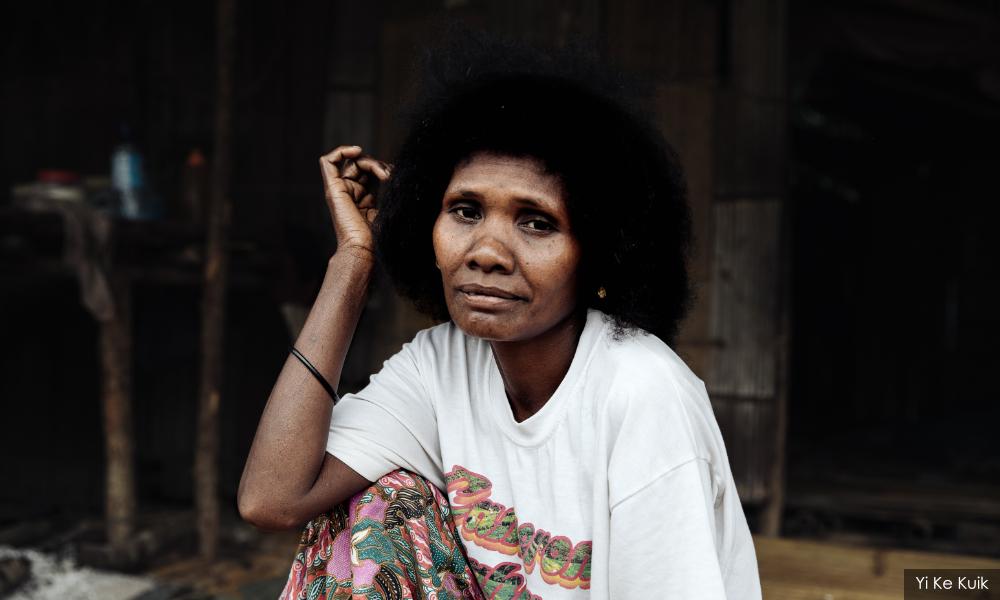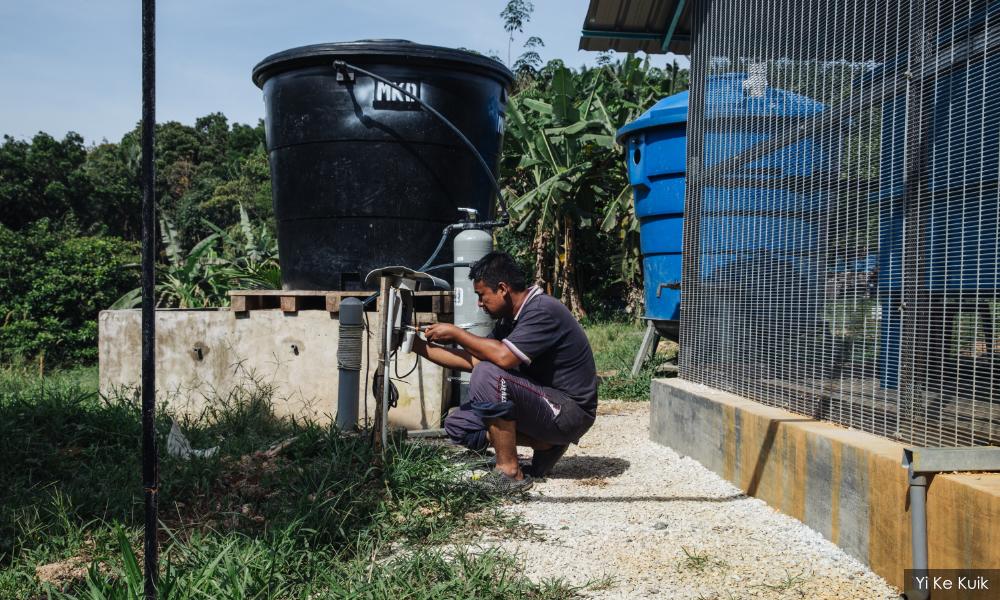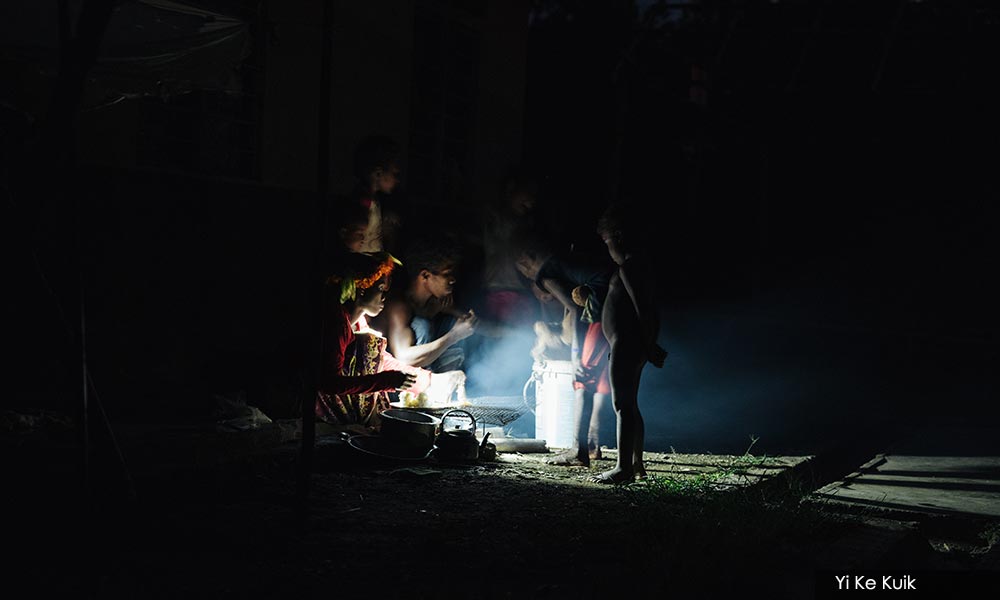Two years have passed since the measles outbreak in May 2019 killed 16 Bateq villagers in the remote outpost of Kuala Koh in Kelantan’s Gua Musang district. Families were ravaged and the social structure of the community was shaken as the national spotlight fell on this sheltered group. Now, as the Covid-19 pandemic rages in the outside world, we find many questions still unanswered.
On a purely structural level, physical improvements were promised in November 2019, when then deputy prime minister Dr Wan Azizah Wan Ismail announced that RM3.3million had been allocated to improve the living conditions of the villagers.
The funds were to be used to meet the various needs of the villagers, including the construction of a power supply system, water treatment system and learning centres.
So, have the lives of the villagers improved after the mass death incident?
Still, no answers, says village headman
It all started when a Bateq woman died of an unknown disease in Kuala Koh village, Kelantan, on May 2, 2019. Over the next few weeks, young people, babies and a few families passed away. "Their stomachs and throats were swollen, chests felt tight, and they began to vomit. This was how my eldest son and youngest son died," a Bateq woman living in the village recalls.
The "unknown disease" claimed the lives of 16 Bateq people in just one month, ranging in age from one to 63 years. Among them, half of the dead were young people between 18 and 35 years old. After much speculation, the Health Ministry announced in September 2019 that the cause of these mass deaths was measles.
“We are still not satisfied with this answer,” Pokok, the village headman, said. "As far as I know, measles will not kill so many people nowadays."

Walking into Kuala Koh village, there are rows of pale yellow brick houses built by the Orang Asli Development Department (Jakoa) in 2010. These houses were built under the Housing Assistance Programme (Program Bantuan Rumah), which aims to provide houses for indigenous people living in poverty so that they can lead a "modern" life.
However, most of the brick houses in the village are empty. Some Batek people do not live in brick houses, but built haya (lean-to shelters) by using bamboo and tree branches next to the brick houses. Pokok says the haya are more comfortable and livable.
Pokok and his wife Lina have seven children, with the eldest being 21 years old and the youngest three.
As a breadwinner, Pokok often takes his eldest son to the forest in search of food, and returns with fishes and shrimps. Lina, the housewife, cooks the food that is brought back.
Contacted by phone a few weeks ago, Pokok and Lina are still shy. Their voices are soft and light when speaking to outsiders. Lina unconsciously frowns when she speaks and complains that the brick houses in front of her are too hot to live in.
A brick house less than 50 sq m has a rectangular layout, with three rooms, a bathroom, a toilet, a living room and a cooking station. However, regardless of whether the house is inhabited or not, bathrooms and toilets are usually smelly and dirty. Some rooms are full of clutter, and each mottled wall is covered with children’s graffiti.
Most of these brick houses are abandoned.
While the houses are empty most of the time, the scene in the haya seems to be completely different.
The bamboo house has been carefully decorated and well organised. One of the reasons the Bateq prefer to rest and chat inside is that the bamboo material makes the houses cool and fresh, especially in hot weather. Occasionally, the children will sprawl on the haya and ask their mothers to catch lice in their hair.
No facilities in the houses
For those families living in brick houses, they will take the children to the shared bamboo gazebo and enjoy the cool breeze
"Why don‘t you turn on the fan?" they were asked during a visit last year.
"There is no electricity."
"So there is a power outage?"
"There has been no electricity for a long time."
Jakoa built these rows of houses in 2010 and installed fans, lights and electrical switches in the houses, but the supplies of electricity and water are lacking.
In other words, the Bateq people in Kuala Koh village have been living without electricity and a stable water supply in the past 10 years.
They have to walk for about one to two hours to recharge a mobile phone in a place with stable electricity. If it is late at night, they will light up the oil lamp and dine under the dim light. They will drink the water from pipes, or take it from rivers and heat it before drinking.

"The government says it will be more convenient to live in a brick house and tells us not to miss our previous life in the forest. But I don't think our life has improved at all now," Lina said.
She believes that as Bateq, they are the children of the forest and should live in the forest, like their ancestors.
In the Bateq language, "hep" means forest, so the Bateq consider themselves "Bateq Hep". They usually say "Cep bah hep" as well, which means "into the forest". For the Bateq people, they connect themselves with the forest - whether it is life, identity or ancestral beliefs.
Lina recalled her childhood memories, saying that she would follow her parents to learn the necessary skills in the forest. They know how to judge which animals have been there from the muddy footprints, and are familiar with various plants and herbs, as well as using bamboo to quickly make shelter and rafts within a few hours.
Sometimes they have to walk for hours or even days to bring back food, and this often consumes a lot of energy. Therefore, they will hunt animals whenever cassava or fish cannot replenish their physical strength and energy.
"If the prey is large, we will need the cooperation of several strong boys. They will cut off the head of the prey with a knife, remove the inedible parts, then wash it by the river and roast it on fire." When the topic switches to life in the forest, Lina's wrinkled brows finally ease.
Still drawn to the forest
For the Bateq, life in the forest seems easier and happier.
They can wade steadily on the rocks in the rapids, even with slippers. When their toes get entangled with leeches, they, without any rush, just use the twigs to poke the leeches away. In order to avoid getting lost or allowing their companions to follow in their footsteps, they will break a small branch or drop a branch along the way as a sign.
"What if you are still lost in the forest?" they were asked.
"Sleep well and take a rest first! When we get up the next day, we will stay calm and try to recall the routes we’ve taken." Lina said.
"What if you run into tigers and elephants?"
"What else? Just run as fast as we can!" Lina chuckled and responded to this "ridiculous" question. She recalled the good old days in the forest when they could go out anytime, taking children to fish and play in the river.
There were forests around the Kuala Koh village, Lina recalled, but the village is now surrounded by a large-scale oil palm estate. "Our life is not good at all,” she says.
Kuala Koh village is adjacent to the Kuala Koh National Park in Kelantan. It has been the living base of the Bateq people since a long, long time ago. There are now about 52 families with 200 people there, according to Pokok.
The Bateq are indigenous people who are among the oldest inhabitants of Peninsular Malaysia, based in Kelantan, Terengganu and Pahang. According to the latest data in 2010, the indigenous people of Peninsular Malaysia accounted for only 0.6 percent of the Malaysian population, or 178,197 people, while the Bateq accounted for 1,447 of them.
The Bateq people live as semi-nomadic hunters and gatherers, practising a mixed economic lifestyle, and earning a living through hunting, trading and farming.
Today, Pokok said, although the villagers occasionally suffer from minor illnesses, they are generally healthy. However, he says that the water supply - although the water purification filters and water towers were installed two years ago - is still unstable, so many villagers move into the forest because it is more convenient to use river water.
Pokok said the electric cable poles could now be seen on the roadside, but it is uncertain when the village will have electricity, and the school previously promised by the government has not yet made progress.

Plumber Khairul, who helped install the water towers, says that life in the village has been improved. And clean water and electricity are also expected to be available in the coming months.
However, Jakoa and the then director-general Juli Edo did not respond when asked about the current situation in Kuala Koh.
The Rural Development Ministry is still identifying a suitable candidate to replace Juli Edo, who retired in April. So, there have been no answers to our questions.
The disappearing forests
Of course, the Bateq people know that the oil palm plantations are one of Malaysia's main sources of income, with the oil palm industry contributing 2.8-4.8 percent of the GDP to the country from 2011 to 2018. Malaysia is also one of the largest oil palm producers and exporters around the world.
According to the Global Forest Watch, from 2002 to 2020, Malaysia lost 2.70Mha of humid primary forest, making up 34 percent of its total tree cover loss in the same time period. Total area of humid primary forest in Malaysia decreased by 17 percent in this time period.

Logging activities began in the 1970s and large-scale deforestation has deprived the Bateq of their customary land, destroyed edible trees and polluted the rivers.
But from the point of view of the Kelantan government, it brings a substantial source of income. In 2016, forest revenue accounted for 29.12 percent of the estimated entire revenue of the Kelantan government, totalling approximately RM173 million.
Though oil palm estates and logging have been the great profit contributors to the federal and Kelantan state governments for decades, the indigenous people relying on forests have been left behind.
In 2014, Kelantan suffered the worst flood in 30 years, with more than 120,000 people becoming homeless. The Bateq in Kuala Koh village fled to higher mountains. Then a manganese mine operated just 3km away from the village in 2016. The Kelantan Department of Minerals and Physical Sciences then immediately shut down the manganese mine on June 11, 2019, soon after deaths caused by the mining were reported.
Colin Nicholas, executive director of the Centre for Orang Asli Concerns, told Malaysiakini that the root of the problem was that the natural habit of the Bateq was being destroyed.
"The problem is not medical, but a direct result of what happens when people’s rights to their customary lands are not recognised and that land is destroyed.
"Just seven to 10 years ago, if you visited them, they were perfectly healthy and psychologically happy.
"But their land has been taken away, in this case by the Kelantan government. And their resource base has been destroyed," he said.
Nicholas' views were echoed by an outreach doctor, Dr Steven Chow, who had visited the community on April 28, 2019, just a week before the deaths of the 16 Bateq villagers.
"This is a community left behind, dying from neglect," he said.
"After their land was taken away for plantations, these people were essentially left to fend on their own and were virtually cut off from the resources of the jungle which they had previously depended on for their survival."
Still questions about clean water
"I miss the days when we splashed and bathed in the river,” said Aziz, a young Bateq, referring to the days when they used to play by the clean river. "I feel sad."
"The river smells bad," said Pokok. "Is it possible that the 16 deceased had drunk polluted water?
"We know that it is poisonous, but we are not sure what the disease is. As the older Bateq people told us, measles does not kill so many people. What I know is that in the past, measles only killed one person a year, but now it took only a month (to kill so many people)," Pokok pointed out.
Some had argued that the water pollution, which was suspected to be related to the manganese mining activities near Kuala Koh village, may have been the cause of the illness among the Bateq.
But it was debunked by the authorities who said there was no water contamination from manganese mining, and added that the water quality at the sampling location was in compliance with the National Water Quality Standards for raw water.

After the outbreak, water purification filters and water towers were installed by the plumber Khairul in the Kuala Koh village, according to the Bateq villagers.
But the newly installed filter and tower are still not stable.
Khairul believes that part of the reason for the running out of water is that the Batek people have no concept of saving water.
“They still live the same life as they used to. They don’t need to pay monthly bills, that’s why they don’t save water as we do,” Khairul said, adding that the water tower has enough water for the whole village to use for a day.
After the tragedy, some Bateq people moved closer to the forest; according to Lina, it takes two hours on foot from the village. Speaking of the deaths of the 16 villagers, Lina's tone revealed powerlessness: she not only has doubts about the cause of the tragedy, but also the way the Batek "leave" the world.
The traditional burial practice of the Bateq is for the corpse to be wrapped in tree bark and carried across a river, which, according to their belief system, prevents the spirit from returning to the village.
The body is then harnessed to a tall tree in the burial area using vines and is left there to decompose. Burial grounds are considered taboo by the Bateq.
However, for the purpose of post-mortem tests at that time, those deceased were found and eventually buried according to Islamic rituals because Bateq are officially recognised as "Muslims".
Lina wants to move closer to the forest again.
"The government said that our previous life (in the forest) was very difficult, but as Bateq, we feel at ease. Living in a city makes us feel bad.
“Some people are sick: they bully us, laugh at our hair and body. It is not that we ask the government to let us live a modern life; we are living a primitive life.
"This is the best way. So we don't need to make money, and we don't need government help, including water towers and electricity.”
Lina said that she would wait for Pokok, the headman, to “sincerely” discuss the matter with Jakoa.
"Does the government say when the installation of electricity will be ready?" they were asked.
"Maybe it won't happen until (again) someone dies!”, Lina's daughter Kreyas interjected, and then turned her head away. - Mkini



No comments:
Post a Comment
Note: Only a member of this blog may post a comment.